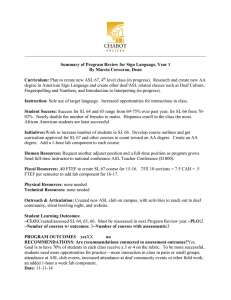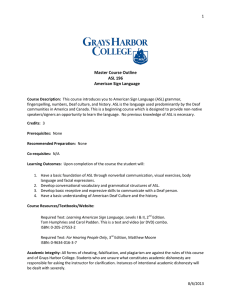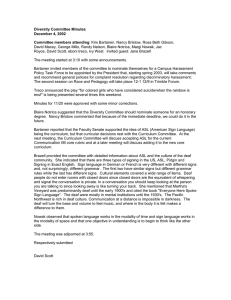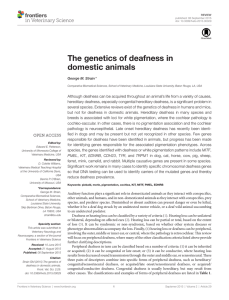HIS 180 ASL I Rachel Bianca Mallari Instructor: Dianne Smith
advertisement
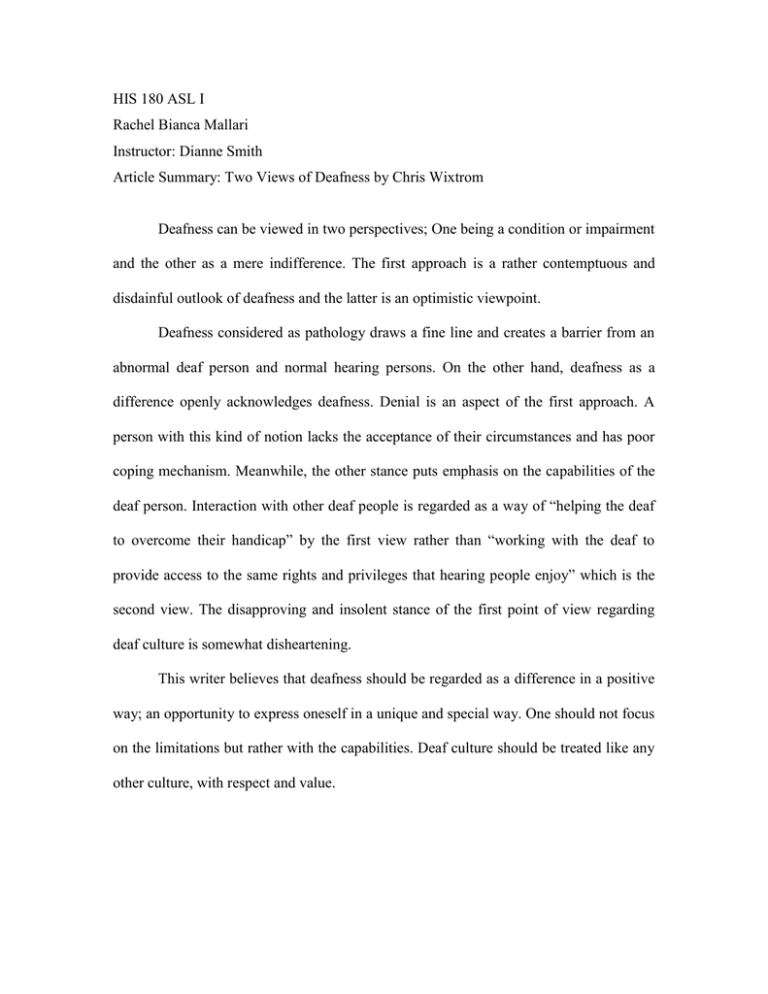
HIS 180 ASL I Rachel Bianca Mallari Instructor: Dianne Smith Article Summary: Two Views of Deafness by Chris Wixtrom Deafness can be viewed in two perspectives; One being a condition or impairment and the other as a mere indifference. The first approach is a rather contemptuous and disdainful outlook of deafness and the latter is an optimistic viewpoint. Deafness considered as pathology draws a fine line and creates a barrier from an abnormal deaf person and normal hearing persons. On the other hand, deafness as a difference openly acknowledges deafness. Denial is an aspect of the first approach. A person with this kind of notion lacks the acceptance of their circumstances and has poor coping mechanism. Meanwhile, the other stance puts emphasis on the capabilities of the deaf person. Interaction with other deaf people is regarded as a way of “helping the deaf to overcome their handicap” by the first view rather than “working with the deaf to provide access to the same rights and privileges that hearing people enjoy” which is the second view. The disapproving and insolent stance of the first point of view regarding deaf culture is somewhat disheartening. This writer believes that deafness should be regarded as a difference in a positive way; an opportunity to express oneself in a unique and special way. One should not focus on the limitations but rather with the capabilities. Deaf culture should be treated like any other culture, with respect and value. HIS 180 ASL I Rachel Bianca Mallari Instructor: Dianne Smith Article Summary: In Your Hands by Jenna Cassell The main focus of the article was about establishing a topic in ASL and the order of signing which plays a vital role in painting the picture of your sentence or story for your audience. Unlike the English language where the subject is the topic of the sentence, ASL topic is the object where all other objects refer to and interact with. As the given example in the article, “The boy sat on the elephant”. In English language, the boy is the subject. However, in ASL the elephant should be the topic because their might be a conflict in getting the idea across that the elephant is under the boy. In a single-subject sentence, the order of signing should be concrete to abstract. For instance, the illustration given on the essay was that “The girl is pretty”. Thus, the girl which is concrete should be signed first, then, pretty which is an abstract concept. In addition, the ASL topic should be followed by information regarding or describing what the topic is doing or what it is about. Non-manual signs(NMS) are also vital for several reasons. They “add to the grammatical structure of a sentence, identifying the “parts of speech” or add adverbial information to the verb or adjective.” Facial expression, eye gaze, pauses, shoulder shift and the speed and size of signs all contribute to indicate the topic. The article is a good way of learning the sentence structure in a correct sequence in ASL. The exercises provided at the end of the article is a great way to practice.


